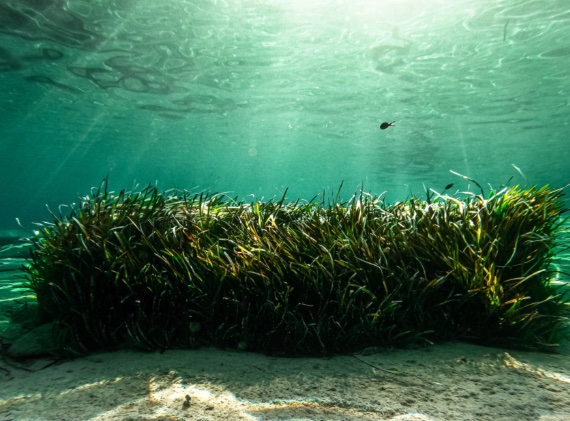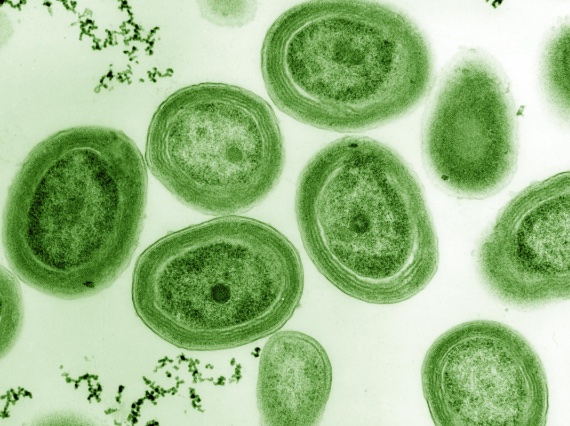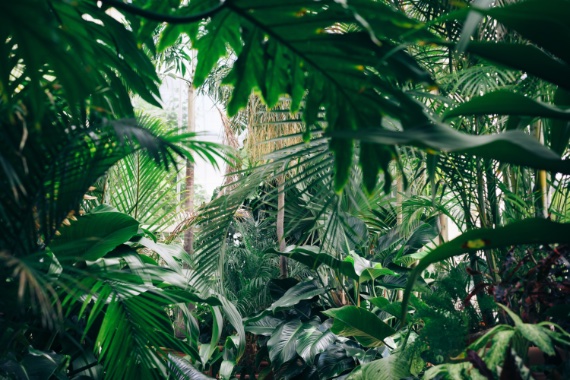When in the summer of 2019 the Amazon rainforest suffered a particularly bad season of forest fires, French President Emmanuel Macron issued a warning on Twitter: “The Amazon rainforest—the lungs which produce 20% of our planet’s oxygen—is on fire.” The truth is that Macron was merely repeating a factoid that is often quoted on the Internet, the origin of which is obscure. And it is incorrect. But leaving aside the strangely popular idea of calling the places where oxygen is produced lungs—what these organs actually do is consume it—where does the oxygen we breathe actually come from? Is there a terrestrial ecosystem that mostly takes on this function, and whose disappearance could literally cut off our ability to breathe?
Oxygen, which all animals need to breathe, is the most abundant element in the Earth’s crust: almost half (46%) of all this matter is oxygen. In the total mass of the Earth, it is only narrowly surpassed by iron, at 32% compared to 30%, so it’s not exactly a rare chemical element on the planet. But oxygen is highly reactive, so it looks for any opportunity to bond with others, oxidising them, as it does with almost all the other elements. But we cannot breathe water (a hydrogen oxide) or sand (silicon dioxide); we need oxygen in its free form, O2, which fortunately for us represents 21% of the composition of the atmosphere.
Oceans, the largest source of oxigen
In living organisms, oxygen is also used for oxidation, a process by which we extract energy for our metabolic needs and whose end products, in the case of organic matter, are water, CO2 and minerals. Atmospheric oxygen must therefore be continually replenished to compensate for consumption. This happens thanks to photosynthesis, a marvellous evolutionary mechanism present in a multitude of terrestrial organisms, which reverses the process. Using water and CO2 as raw materials, and plugging the photosynthetic machinery into the energy of sunlight, these beings manufacture their organic matter, generating in exchange a very peculiar waste product: molecular oxygen, O2. In effect, their waste is the gas that allows us all to breathe.
Thus it is true that immense amounts of oxygen are continuously being manufactured on Earth. But although the Amazon rainforest is the largest expanse of forest on the planet, its contribution to the total production of oxygen is actually very small. Approximately 50% of all photosynthesis takes place in the oceans, thanks to phytoplankton and algae in the upper layer of water that receives sunlight. This fact has led to the claim that the oceans are the true lungs of the planet, or that we owe every second breath we take to the oceans. A single type of organism, the cyanobacterium Prochlorococcus, is the world’s smallest photosynthetic organism, but also the most abundant: it is estimated to be responsible for 5% of global photosynthesis.

The other half comes from terrestrial plants. Thus, “rainforests and phytoplankton are producing a major portion of the O2 that is being made today,” geochemist and environmental engineer Neal Blair of Northwestern University summarises for OpenMind. As for the Amazon’s actual contribution, it is barely 9% of the global total, according to Oxford University ecosystem ecologist Yadvinder Malhi. Other estimates put it as low as 6%, or perhaps less. Malhi points out that by rounding up this 9% figure and then counting only the contribution of the terrestrial fraction (which is equivalent to multiplying by two) may have been the source of the 20% figure cited by Macron and many others.
However, there is a catch. This entire global production of oxygen through photosynthesis comes with a clause in the fine print: almost all of this oxygen, as it comes, so it goes. The photosynthetic organisms themselves breathe at night, when there is no sunlight, undoing the work they have done—like Penelope unweaving by night what she wove by day. According to Malhi, this consumes at least half of the oxygen produced. Added to this is the respiration of all other living things. No less important, when any organism dies, the microbes use that reaction-hungry oxygen to break down its organic matter, ultimately returning CO2, water and minerals to the environment. In Malhi’s words, “the net contribution of the Amazon ecosystem (not just the plants alone) to the world’s oxygen is effectively zero. The same is pretty much true of any ecosystem on Earth.”
The Great Oxidation
So where did the 21% of atmospheric oxygen that we enjoy today, and which remains constant, come from? “It is important to distinguish between O2 production rate (or flux) and O2 stock,” says Blair. “O2 production and consumption (respiration) are almost perfectly balanced but there is a small portion (maybe ~0.1% globally by some estimates) that is not consumed.” This tiny positive balance is due to a small anomaly in nature’s recycling process: when dead things are trapped in the soil without completing their decomposition, their carbon is stored as organic matter in the rock; this is what we know as fossil fuels. The oxygen that has not been consumed in this failed process is left as a surplus. “This tiny fraction that is not consumed has accumulated in our atmosphere for about 2 billion years,” says Blair. “We now have an atmosphere of 21% O2 because of that gradual accumulation.”

“We are living on an inheritance,” Blair sums up. That inheritance began to develop in the first two billion years of Earth’s history with an atmosphere in which oxygen was almost non-existent, at 0.001%. Then, between 2.4 and 2.05 billion years ago, an unexpected plot twist occurred, the causes of which are still obscure: the first photosynthetic cells, cyanobacteria or perhaps other more primitive microorganisms, emerged. Then began the so-called Great Oxidation, the accumulation of oxygen in the atmosphere, which its epic name was infinitely slow and subtle: “It is important to realise that this event developed over more than a billion years,” oceanographer Jean-Pierre Gattuso of Sorbonne University (France) tells OpenMind; for the first 400 million years the increase was barely noticeable, Gattuso says. And in the last 500 million years, terrestrial beings have enjoyed an abundant level of the precious gas.
Central regulatory controls of the earth’s climate
So it follows that, to keep breathing, we don’t really need the forests and oceans. “If we do a thought experiment in which all the biosphere was burned, thereby stopping all photosynthesis and respiration, and consuming O2 from the combustion of the biosphere organic matter, the O2 content of the atmosphere would drop from 21% to ~20.8-20.9%,” Blair explains. In other words, even if humans were the only surviving species on the planet, breathing would never be a problem. But of course, we would be living in an uninhabitable world, since forests, oceans and other ecosystems are vital in many other ways, not just for providing food: they are the central regulatory controls of the earth’s climate, and the immense amount of carbon they sequester prevents the release of huge masses of CO2 that would cause a catastrophic greenhouse effect; unlike oxygen, the presence of CO2 in the atmosphere is measured in parts per million, so small variations have a big impact.

This last point is of crucial importance in the context of climate change, as it provides a better understanding of the problem of fossil fuel burning. Terrestrial CO2, one of the main drivers of climate, is itself naturally regulated by the so-called carbonate-silicate cycle, which circulates oxygen between these two types of rocks and operates on a scale of millions of years. “Fossil fuel consumption is an almost instantaneous process,” says Blair, which “overwhelms the natural CO2 regulation.” In other words, it means reversing the slow work of photosynthesis, ripping carbon out of the rock cycle and rapidly injecting it into the atmosphere, forcing the Earth’s thermostat in a way that nature is unable to counteract: “If we were to stop fossil fuel combustion today, it would take a very long time for the natural process to catch up.”
To sum up, and returning to the Amazon rainforest, we don’t breathe thanks to it, but its importance for the health of the planet is almost indescribable: it is home to the greatest global biodiversity, from its 2.5 million species of insects and 20% of the world’s birds, to its 40,000 different types of plants of which we know of so far. One fifth of the freshwater that flows into the oceans flows through the Amazon River, and its role in the global water cycle and in regulating the earth’s climate is irreplaceable. No confusing lung metaphors are needed to understand why we cannot live without the Amazon, or without the oceans.
Comments on this publication